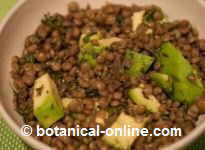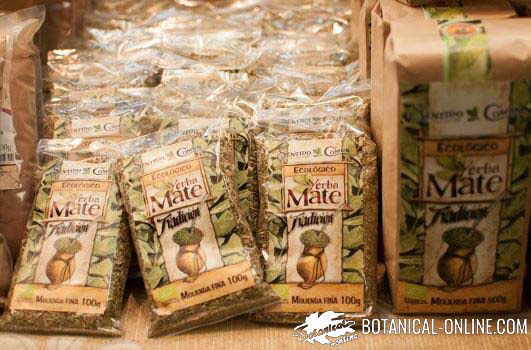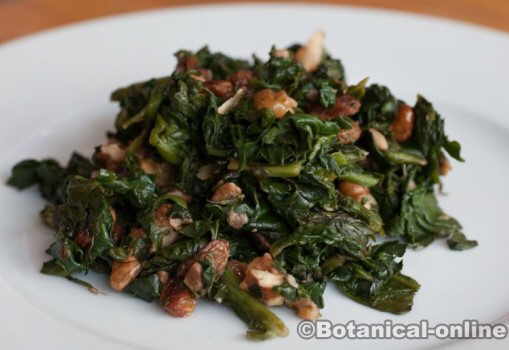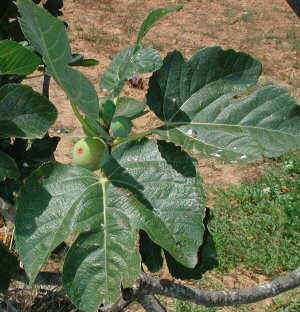Contents
- 1 Health benefits of mistletoe (Viscum album L.)
- 1.1 Characteristics of mistletoe
- 1.2 Botanical description of mistletoe
- 1.3 How mistletoe seeds are dispersed?
- 1.4 Is mistletoe a parasite plant?
- 1.5 Picking and storing mistletoe
- 1.6 Mistletoe composition
- 1.7 PROPERTIES OF MISTLETOE
- 1.8 Mistletoe medicinal plant for cancer treatment
- 1.9 Traditional uses of mistletoe for internal use
- 1.10 Mistletoe for the heart
- 1.11 Other uses of mistletoe
- 1.12 Natural products of mistletoe for external use
- 1.13 Magical uses of Mistletoe
- 1.14 Cinegenic properties of mistletoe
- 1.15 Mistletoe hazards
Health benefits of mistletoe (Viscum album L.)
Characteristics of mistletoe
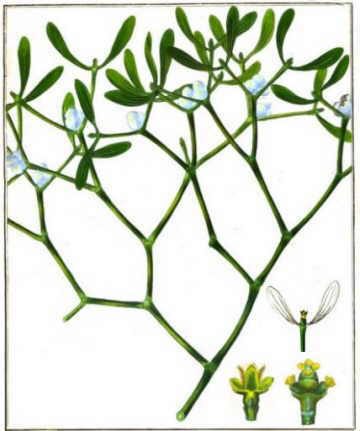
Common noun: Mistletoe, European mistletoe
Scientific noun: Viscum album L.
Family: Loranthaceae
Habitat: It lives as a semi-parasite plant on the branches of several trees, mainly deciduous such as apple, oaks or poplars, but sometimes on some pines, too.
Botanical description of mistletoe
Perennial green shrub to one meter long. Its stem is very short but it’ s got many branches repeatedly forking,so they make a sort of a big clump hanging from the invaded tree.
Flowers are unisexual. They grow in clusters of three or five on male or female plants. Male show four tiny petals and four stamens without anthers, directly joined to petals. Female flowers are very simple. Both of them greenish.
Its fruit is a white, translucent berry about 6 or 10 mm in diameter with only one seed.
How mistletoe seeds are dispersed?
Birds are very fond of these kind of berries. One they have eaten them, they get rid of their seeds by rubbing their beaks on to the branches of the trees.
By doing this, the sticky seeds get stuck on the tree. There they produce some special roots which begin to suck the sap of the infested plant.
Is mistletoe a parasite plant?
Since mistletoe is also able to synthesize part of their food needs by means of photosynthesis , something that distinguishes this plant from the real parasitic plants, we say that this is a semi-parasitic plant.
Picking and storing mistletoe
Berries can be collected in Autumn. The rest of the plant in winter, too. We must dry it in the sun and preserve it in cloth bags in a dry place.
- In some countries, mistletoe is protected. In those cases, you can not collect it.
Mistletoe composition
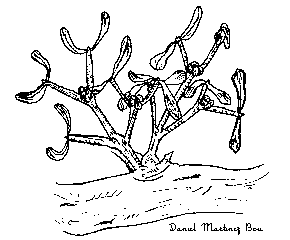
- Viscotoxins: These are the viscotoxin peptides A1, A2 and B.
- Alkaloids: Mistletoe is a parasitic plant and can contract alkaloids from its host. For example, nicotine in the case of tobacco.
- Mucilage
- Starch
- Quercetin
- Lecithins
- Phenolic acids: ferulic, anisic, myristic, sinapic, quinic, caffeic, coumaric, etc.
- Tannins
- Terpenoids
- Galacturonic acid
- Fats: oleic and palmitic fatty acids (80%)
PROPERTIES OF MISTLETOE
Mistletoe medicinal plant for cancer treatment
Currently the main interest of the mistletoe as a medicinal plant is its role as a coadjuvant in the treatment of cancer, helping to prevent its development in some cases. Its pharmacological action is based on the cancerostatic, immunostimulant and cytotoxic effect exerted by the viscotoxins and lecithins of the plant.
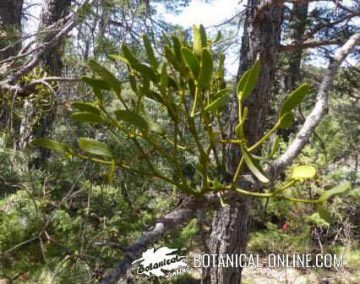
One of the extracts used in early studies is Iscucin Salicis (mistletoe grown on willows -remember that mistletoe is a semiparasitic plant). There has also been much talk about a drug currently used by conventional medicine called Iscador, obtained from the juice of the fermented mistletoe plant. This medicine has been administered in patients with breast cancer, cervix, stomach, rectum and colon, obtaining the best results in the latter.
Because of its demonstrated anti-tumor properties, Iscador has been recommended as an adjunct to conventional cancer treatment in chemotherapy and radiotherapy. Moreover, many more supporting evidence for their effectiveness and determine what types of cancer is more convenient to apply are required, since by the time the results are controversial. In addition, it should be mentioned that the treatment of cancer should always be personalized, given the diverse characteristics that this disease can present.
Traditional uses of mistletoe for internal use
Mistletoe is a medicinal plant traditionally used for hypertension and other cardiovascular diseases, although currently these uses are not recommended due to the existence of other safer remedies, and the possible toxicity of mistletoe.
Mistletoe for the heart
It is considered a cardiotonic and hypotensive remedy. It is a known cardiac depressant. Traditionally in mistletoe it has been used to lower blood pressure and regulate the heart rate. The hypotensive effect of this plant is due to its components acetylcholine, histamine, GABA, tyramine and flavones.
All this – according to some authors – is only possible when its active substance (viscotoxin) is injected intravenously. Its use, in this sense, would be restricted to the prescription by a professional.
Ancient authors recommended leaf infusions (one teaspoon per cup) or bark stews (10 grams per liter) to achieve positive effects on the heart and circulatory system in general.
Other uses of mistletoe
- Retinal detachment or glaucoma The last treatment of mistletoe can be very useful for the treatment of retinal detachment or glaucoma (Infusion of a teaspoonful of dried plant per cup of water. Take this cup twice daily.)
- Tinnitus: This preparation is very useful for tinnitus treatment: Decoction for 15 minutes of a teaspoon of branches and leaves per cup. Do not exceed this amount. 5 g of plant as a maximum per day .
- Antiepileptic: Take three cups of dry leaves infusion (a teaspoon per cup)
The toxic principles of mistletoe indicate that self-medication is not adequate.
Natural products of mistletoe for external use
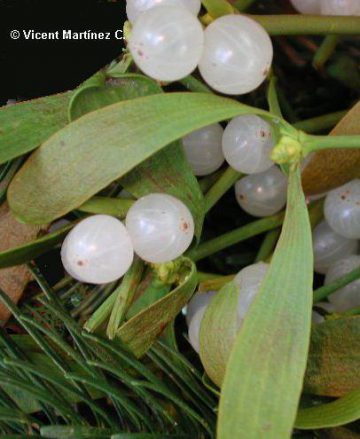
- Anti-rheumatic: Apply a compress soaked with the boiling of dry leaves on the part of the body affected with rheumatic pains.
- Anti-cancer: Mistletoe extracts are useful for repairing damage to the DNA of cells. They are used primarily to prevent the development of tumors in patients who are going to be operated on or who have been operated on for cancers.
With this, not only is possible to reduce the possible growth of new cancer cells, but these extracts, by stimulating the defenses, are able to prevent possible infections (Application of extracts by internal way by a doctor and according to the conditions of the patient)
Despite its proven effectiveness, there is great controversy regarding its use. Some specialists claim that these extracts may also be responsible for the appearance of brain tumors.
Magical uses of Mistletoe
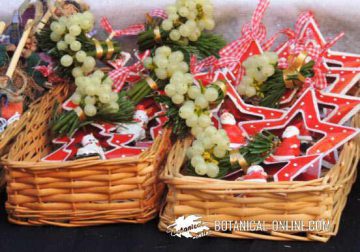
It is a plant which has traditionally been considered magical. The old druids used it to prepare their magical brew. Nowadays it is widespread the modern tradition of considering it a good luck plant.
It is also thought that it will bring happiness to those lovers who kiss themselves under it. This way of thinking has produced a trade, highly extended on Christmas; which although illegal, might endanger this species.
* Related information: Christmas plants
Cinegenic properties of mistletoe
The sticky substance contained in its berries has been traditionally used to make a glue with which birds can be caught in traps. Nowadays this practice is considered illegal.
Mistletoe hazards
Mistletoe is considered a toxic plant. All parts of the plant are poisonous. Although certain quantities must be taken for their toxic effects, their internal use should not be recommended as a precaution.
The toxic principles of mistletoe indicate that self-medication is not adequate.
Mistletoe is contraindicated in pregnancy, lactation and in children.
![]() More information on mistletoe
More information on mistletoe


